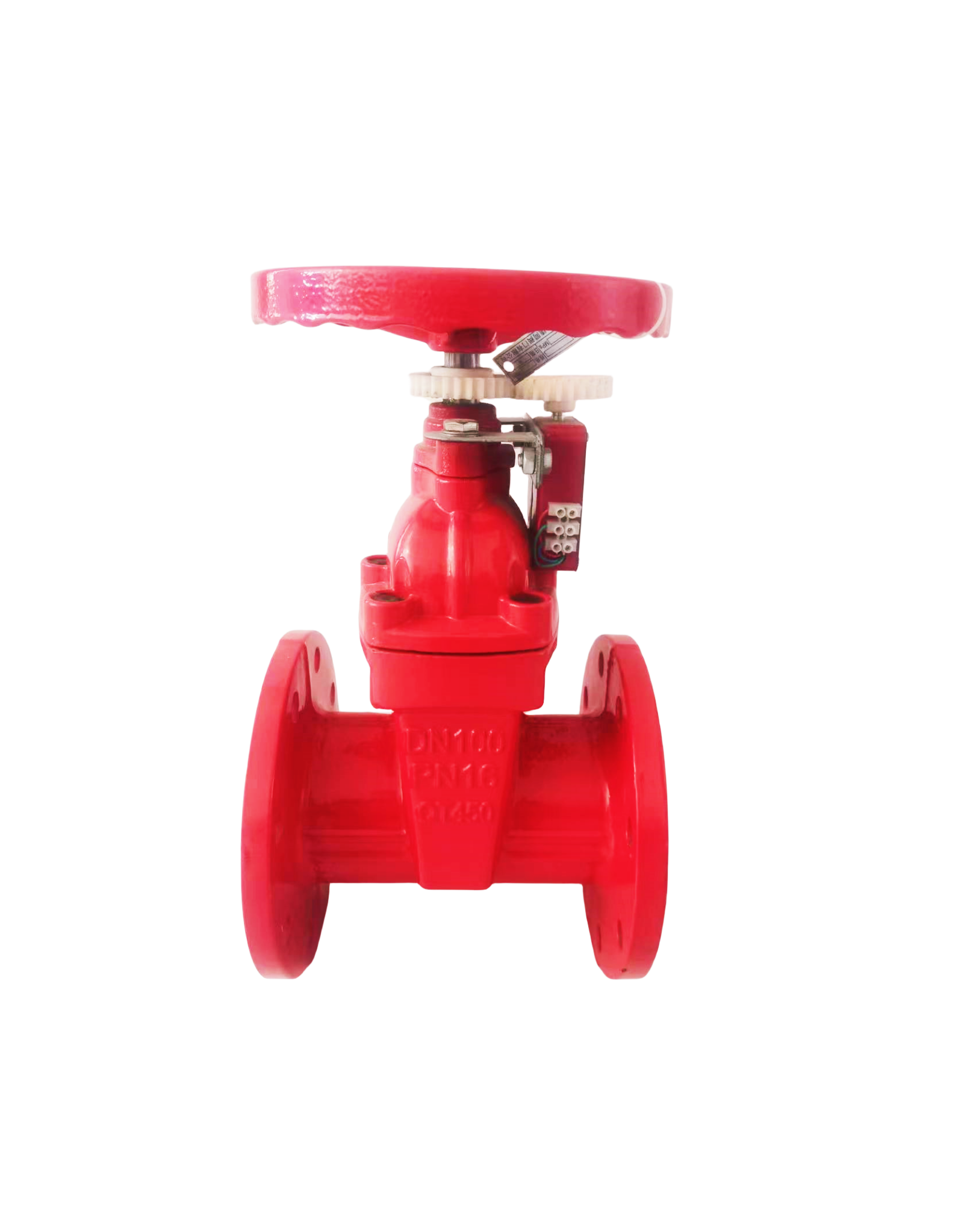Structure and working principle of signal gate valve
Release Time:
Aug 01,2025
The fire signal gate valve is essentially a gate valve with a position sensor. On the basis of ordinary gate valves, a signal device consisting of micro switches, triggering mechanisms, and junction boxes has been added to its structure. The working principle is to use the physical position change of the valve stem to mechanically trigger the micro switch, changing the state of its internal electrical contacts. When the valve is not fully open, the switch state flips, generating an abnormal electrical signal that is transmitted through wires to the fire control center to issue an alarm signal, indicating that the valve status is abnormal and may hinder firefighting water supply. Immediate inspection and handling are required. It is one of the important monitoring points to ensure the reliability of the fire protection system water source.

The fire signal gate valve is essentially a gate valve with a position sensor. On the basis of ordinary gate valves, a signal device consisting of micro switches, triggering mechanisms, and junction boxes has been added to its structure. The working principle is to use the physical position change of the valve stem to mechanically trigger the micro switch, changing the state of its internal electrical contacts. When the valve is not fully open, the switch state flips, generating an abnormal electrical signal that is transmitted through wires to the fire control center to issue an alarm signal, indicating that the valve status is abnormal and may hinder firefighting water supply. Immediate inspection and handling are required. It is one of the important monitoring points to ensure the reliability of the fire protection system water source.
1、 Main structural components
The structure of the fire signal gate valve consists of two main parts: the valve body and the signal device:
Valve body:
Valve body: a basic pressure bearing shell with inlet and outlet flanges (or threaded interfaces) for connecting fire pipes.
Gate: Usually a wedge-shaped or parallel double gate structure that moves up and down perpendicular to the fluid direction to open or close the flow channel. The materials are mostly stainless steel, ductile iron, or copper alloy.
Valve stem: a transmission rod that runs through the valve cover, with one end connected to the gate and the other end connected to the operating mechanism (handwheel). The rotating handwheel drives the valve stem to move up and down in a straight line, thereby driving the gate to rise and fall. The valve stem is usually made of stainless steel material.
Valve cover: seals the top of the valve body and accommodates the part through which the valve stem passes.
Packing box/seal: located at the position where the valve stem passes through the valve cover, it is composed of packing (such as graphite packing) and cover to prevent medium leakage along the valve stem.
Handwheel/Operating Wheel: Used for manually turning on and off valves. Usually with clear "on" and "off" directional indications.
Locking device: The signal gate valve must be kept fully open. Therefore, it is usually equipped with locking devices (such as lock holes, chain locks, or lead locks) or obvious locking signs to prevent accidental closure.
Signal device:
Core components: This is the key difference between signal gate valves and ordinary gate valves.
Micro switch/travel switch: The most commonly used sensing element, usually installed near the drive nut (stem nut) of the valve stem or at the top of the valve stem. When the valve stem (or nut) is in a specific position (corresponding to the valve fully open), the switch is pressed or released.
Cam/top rod mechanism: connected to the valve stem or valve stem nut. As the valve stem rises and falls, the cam rotates or the top rod moves, triggering the micro switch.
Terminal box: The protection level is usually IP65 or higher, with internal terminal blocks used to connect the wires of micro switches to external monitoring circuits (usually DC24V or dry contact signals).
Status indicator (optional): Some models have visual mechanical indicators (flags or windows) on the outside, displaying the current status of the valve (open/closed) and the action status of the micro switch.





